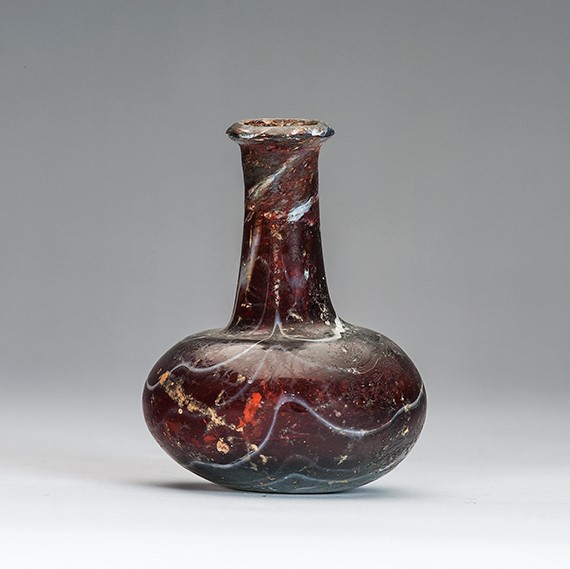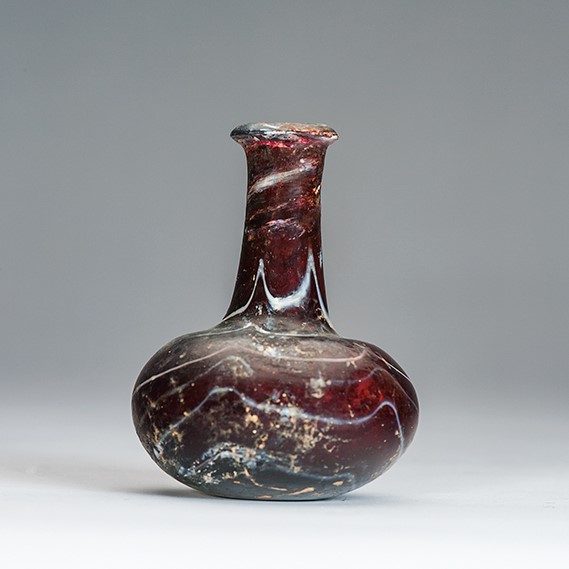Acquisition number: 1978.13
In good condition but for a fragment of the lip which is missing and restored. Aubergine with fine white trails. Depressed spherical body, slightly flattened at the base; slightly tapering cylindrical neck with somewhat rounded, out-turned lip. Marvered blown, then reblown.
Title: Small Marbled Flask - 1978.13
Acquisition number: 1978.13
Author or editor: J.R. Green
Culture or period: Roman Imperial
Date: c. 1st century AD.
Material: Glass
Object type: Vessels - Flask
Dimensions: 55mm (w) × 73mm (h)
Origin region or location: Lebanon
Origin city: Eastern Mediterranean
Display case or on loan: 9
Keywords: Roman, Imperial, Glass
Sotheby (London), Sale Cat., 3-4 July 1978, no. 55, pl. 8.
1978.13
Small Marbled Flask
Purchased. Ht 7.3cm; diam. 5.5cm.
In good condition but for a fragment of the lip which is missing and restored. Aubergine with fine white trails. Depressed spherical body, slightly flattened at the base; slightly tapering cylindrical neck with somewhat rounded, out-turned lip. Marvered blown, then reblown.
Probably first century AD and quite likely manufactured in the Eastern Mediterranean. The type is not uncommon. Compare D. Whitehouse, Roman Glass in the Corning Museum of Glass, ii (Corning NY 2001) no. 769, which he places in the earlier part of the first century. He describes the technique whereby trails were applied to the surface and then marvered in. That example was acquired in Lebanon.
‘H 794’ is written on the base in white ink.
Sotheby (London), Sale Cat., 3-4 July 1978, no. 55, pl. 8.

